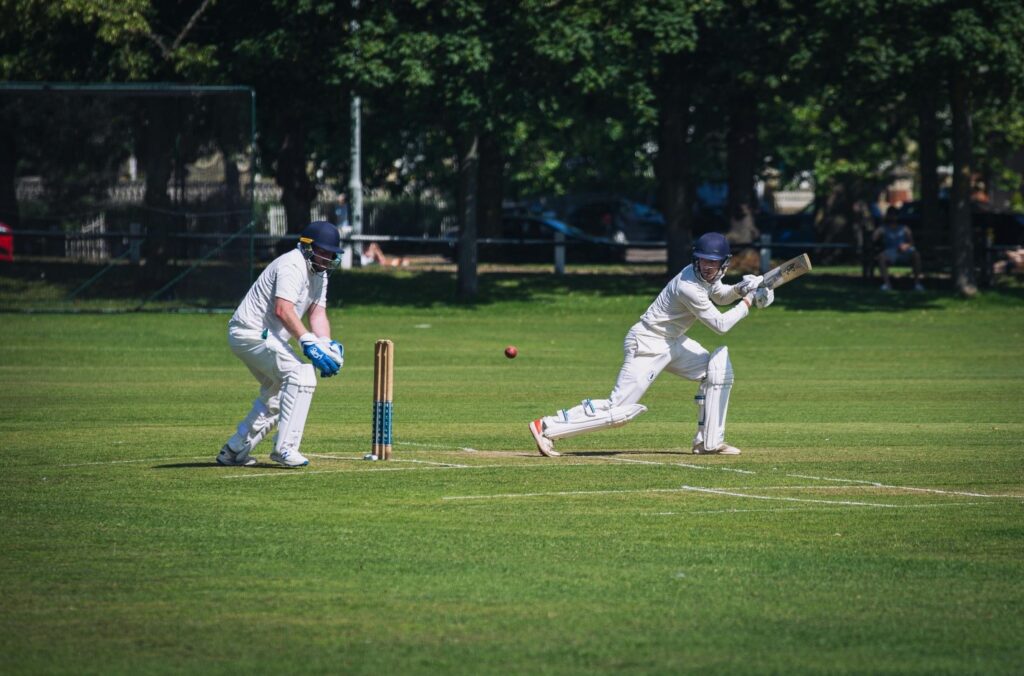
Technology in Cricket, often called a gentleman’s game, has transformed significantly over recent decades. The introduction of technology has been crucial in this evolution, affecting both gameplay and analysis. Systems like Hawk-Eye, the Decision Review System (DRS), and wearable tech have brought cricket into the digital age. These advancements make the game more accurate, fair, and engaging for players and fans alike.
The Role of Hawk-Eye Technology in Cricket
One of the most impactful technologies in cricket is Hawk-Eye. Initially designed for tennis, it now assists umpires in crucial decisions. The system uses multiple cameras to track the ball’s path from the bowler’s hand to its potential point of impact on the stumps.
Impact on LBW Decisions
Hawk-Eye has been most influential in LBW decisions. Before its introduction, umpires relied on their judgment. However, the human eye can often be deceived by the ball’s speed or angle. Hawk-Eye accurately predicts the ball’s path, offering a virtual replay that shows if it would have hit the stumps. This technology improves LBW decision accuracy, enhancing fairness in the game.
Decision Review System (DRS): A Game-Changer
The Decision Review System (DRS) was introduced in 2008 and changed how cricket is played. Teams can now challenge the umpire’s decisions, adding another layer of scrutiny.
How DRS Works as Technology in Cricket
When a review is requested, the third umpire uses technologies like Hawk-Eye, UltraEdge, and HotSpot. These tools provide a comprehensive analysis of the decision in question. For instance, if a batsman is out LBW, the fielding side may review the call. The third umpire then uses Hawk-Eye to determine the ball’s trajectory.
Controversies and Criticisms
Although DRS has been widely accepted, it’s not without criticism. Some argue it’s inconsistent, especially with the “umpire’s call” rule. Despite these concerns, DRS has added transparency to the sport, becoming integral to Technology in Cricket.
Contrast between Hawk-Eye and Decision Review System (DRS) in Cricket
| Features | Hawk-Eye | DRS |
| Primary Function | Hawk-Eye is a ball-tracking technology that visualizes the trajectory of the ball. | DRS a review system that allows teams to challenge on-field umpire decisions using technology like Hawk-Eye. |
| Technology Used | Hawk-Eye uses multiple camera angles to track the ball’s movement. | DRS use a combination of technologies including Hawk-Eye, UltraEdge, and Hot Spot. |
| Role in Decision-Making | Hawk-Eye provides visual representations to assist in decision-making, especially for LBW. | DRS utilize Hawk-Eye data and other technologies to overturn or confirm on-field decisions. |
| Accuracy | Hawk-Eye is known for high accuracy in tracking ball trajectories. | DRS’s accuracy depends on the combined effectiveness of technologies like Hawk-Eye, UltraEdge, and others. |
| Controversies | Hawk-Eye has faced criticism for occasional inaccuracies in tracking. | DRS have been controversial due to human error in technology interpretation and inconsistencies across matches. |
| Impact on the Game | Hawk-Eye has significantly influenced LBW decisions, making them more precise. | DRS have changed the dynamics of decision-making, adding a strategic element to challenges by teams. |
Wearable Technology in Cricket: Monitoring Player Performance
Wearable technology has become a staple in cricket, helping monitor player fitness and prevent injuries. Devices like GPS trackers and heart rate monitors collect real-time data, enabling teams to manage players’ workloads better. For example, GPS trackers can measure how far a player runs during a match. Heart rate monitors provide data on physical strain, allowing coaches to adjust training and reduce injury risks.
Enhancing Training and Performance
Wearables also help improve performance. For example, bowlers can analyze their run-up or stride, while batsmen can focus on their stance and shot execution. This data helps players make precise adjustments to enhance their skills.
Video Analysis: A Tool for Strategy and Improvement
Video analysis is an essential tool in modern cricket. Coaches and players use it to review performances and develop strategies. Analysts review footage from various angles, providing detailed insights. For example, a batsman can study how they were dismissed and work on countering that delivery in future matches.
Studying Opponents
Video analysis is also used to study opponents. Teams examine footage to identify the strengths and weaknesses of rival players. This information gives them a strategic edge, allowing better preparation and in-game tactics.
Ball-Tracking Technology: Beyond Hawk-Eye
In addition to Hawk-Eye, other ball-tracking systems like PitchVision and Smart Cricket offer valuable insights. These tools provide real-time data on speed, spin, and swing, helping players understand their techniques better.
Pitch Vision
Pitch Vision is widely used in training sessions. It tracks the ball’s movement and gives instant feedback, allowing bowlers and batsmen to make adjustments. For instance, bowlers can modify their grip to achieve desired swing, while batsmen can refine their footwork.
Smart Technology in Cricket
Smart Cricket involves embedding sensors in equipment, such as bats. These sensors gather data on a player’s technique, measuring bat speed and angle. Coaches use this data to provide targeted feedback during practice.

Stump Cameras and Microphones: Enhancing the Viewing Experience
Stump cameras and microphones have become a fan favourite. The cameras provide unique views from the bowler’s end, often showing close calls in thrilling detail. These perspectives are replayed during broadcasts, adding drama to the viewing experience. The Stump microphones enhance this by capturing the sounds of the game, from bat hits to player conversations. This level of access makes fans feel more connected to the action.
Umpire Communication Systems: Improving Decision-Making
Umpire communication systems have significantly improved decision-making efficiency. Umpires use earpieces and microphones to discuss calls in real-time. For instance, when there’s uncertainty about a catch, the on-field umpires consult with the third umpire to ensure accuracy.
Fan Engagement and Virtual Reality: A New Era for Cricket
Technology is not only improving the game but also revolutionizing fan engagement. Virtual reality (VR) allows fans to experience cricket as if they were in the stadium. Broadcasters offer VR experiences that provide a 360-degree view of the match, making fans feel part of the action.
Augmented reality (AR) enhances live broadcasts by overlaying data, such as player stats and ball trajectories. This helps fans understand the game better, offering real-time insights during matches.
Social Media and Live Streaming: Expanding Cricket’s Reach
Social media and live streaming have transformed how fans interact with cricket. Platforms like Twitter and Instagram allow teams to share behind-the-scenes content, while YouTube and streaming services provide live match coverage. This has expanded cricket’s global reach, making it accessible to fans worldwide.
The Future of Technology in Cricket
As technology evolves, its role in cricket will only grow. Artificial intelligence (AI) and machine learning are already being used to analyse player performance and develop strategies. These technologies can process vast amounts of data, identifying patterns and trends that may go unnoticed by humans.
Data analytics is also playing an increasingly important role. Teams use data analysts to study every aspect of the game, from player fitness to match predictions. This growing reliance on data will shape cricket’s future, providing teams with more tools to succeed.
Conclusion of Technology in Cricket
Technology has undeniably enhanced cricket, making it more accurate, fair, and engaging. From Hawk-Eye and DRS to wearable technology and video analysis, these advancements have modernized the sport. Looking ahead, innovations like AI and data analytics promise to elevate cricket even further. With technology at its side, the game will continue to evolve and thrive in the digital age.


wow what a upadte.
Good information bro.
I’m like this.
great
wow
good info
nice
good
great